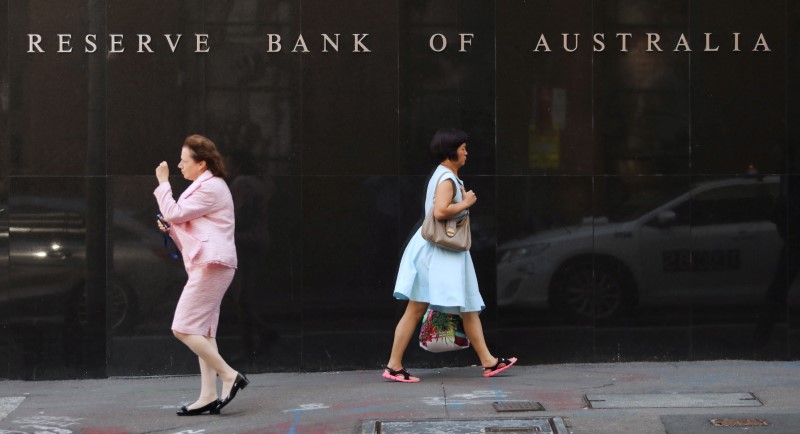SYDNEY, Nov 8 (Reuters) - Australia's central bank is worried it is running out of room to cut interest rates further and that more easing might backfire by hurting consumer sentiment, a signal it might sit on its hands for at least a couple of months.
Yet it also took a decidedly dovish turn on wages, saying growth was "no longer expected to pick up". It forecast subdued wage growth of just 2.3% right out to end 2021, a major reason it was still prepared to ease further if needed.
In its 81 page quarterly statement on monetary policy released on Friday the Reserve Bank of Australia (RBA) said the country's A$1.95 trillion economy was "gradually coming out of a soft patch."
Global financial markets too appear to have passed a "trough of pessimism," it said, painting a more upbeat picture of the world economy than in its previous review in August.
The RBA decided to hold rates this month after reductions in June, July and October to a record low of 0.75% "to allow time to assess the effects" of the cuts.
Markets have recently pared back the probability of a cut in December, though a move next year is still seen as around a 60% chance.
RBA Governor Philip Lowe provided some detail into the board's thinking in October when it eased policy, saying it was "mindful that rates were already very low and that each further cut brings closer the point at which policy options might come into play."
"It also took into account the possibility that further easing could unintentionally convey an overly negative view of the economic outlook, or that the usual channels of policy transmission might be less effective at low interest rates."
The board still assessed at the time that an even easier policy would be helpful for the economy via a lower exchange rate, higher asset prices and a boost to household incomes.
Record-low rates were one reason the RBA expects economic growth to pick up to 2.75% next year before reaching 3% in 2021, both unchanged from its August review.
The near-term forecast was trimmed to 2.25% this year from 2.5% in August.
However, inflation is likely to remain low and unemployment will stay around current levels over the next couple of years, a case for policy to remain accommodative for a long time.
"Spare capacity is expected to remain in the labour market over the next couple of years," Lowe said.
"Consistent with this outlook wages growth is low and shows little sign of picking up," he added. "Faster wages growth would be needed for inflation to be sustainably within the 2-3% target range."
Closely watched measures of underlying inflation undershot the central bank's target for a 14th straight quarter in the three months to September, the longest stretch since the series began.
The RBA said slow wages growth was likely to keep domestic inflation pressures contained.
HOUSING
The RBA noted the recent buoyancy in home prices, especially on the country's east coast, saying the turnaround has come "sooner and faster" than previously expected.
Housing loan approvals have been increasing lately, while auction clearance rates have been trending higher too.
Helped by a pick up in home prices the RBA expects household consumption to rise gradually, though "the timing of the turnaround, the speed of its trajectory and the influence of the housing market on it" are key uncertainties.
The RBA also said that the downturn in the housing market which began in 2017 had a more "pervasive effect" on the economy than it had expected.
